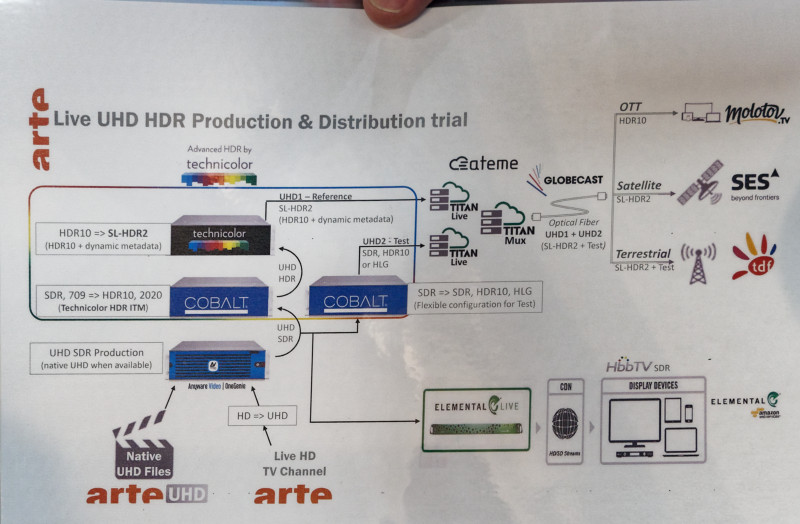Although HLG, HDR10, HDR10+ and Dolby Vision (along with Sony’s S-Log for content creators) are widely reported as the current HDR technologies, there is another scheme, developed and promoted by Technicolor and Philips and based on the idea that you can send HDR as a ‘delta’ second channel allowing a standard stream to be supplied with lower sets (and with performance optimised for that level), but allowing sets that can decode the second stream to get the full level of performance. Both sets of data can be integrated into a single compressed video stream to minimise complication (or they can be sent separately). The original content can be encoded with the PQ or HLG EOTFs and the companies claim to be the best at tonemappping HDR content to SDR displays.
Streams with SD streams and metadata for conversion are known as SL-HDR1 and those with HDR with metadata for down conversion are known as SL-HDR2. For more on the standard and variants, see Chris’s article from CES this year. (Advanced HDR by Technicolor Develops). At IBC, we heard that Sinclair in the US is using SL-HDR1 in its ATSC 3.0 transmissions, in an SDR + metadata format (SL-HDR1)
 The configuration used for the Arte test. Image:Meko
The configuration used for the Arte test. Image:Meko
At IBC, Technicolor was showing in its booth that it is in production with an LG TV. Philips will add support in the 2019 model range and all the largest SoC suppliers can support it. It was also highlighting the Cobalt stand-alone converter that can be used in live productions. Cobalt has been a partner in a trial with Arte in Europe (see our article from the SES Tech Talks Arte Conducting HDR Tests) and also for a full series of transmissions in the US of baseball matches at the rate of one per week.
Technicolor is very much in the phase of boosting support and the company told us that it would add three more TV brands in ‘the next few months’ (so presumably by CES for 2019 model support).
An interesting development is that China is in the process of deciding about its national standard format for HDR broadcast and wants to have one with dynamic metadata. The process has reached the candidate stage and the Technicolor scheme is one of the candidates. The process is now waiting for a government decision about the choice of standard.
Analyst Comment
If China was to support the Technicolor standard, then that should ensure very wide support. I’m reminded that one of the key reasons that we all have GPS in our smartphones is because the Japanese government mandated the feature to help with finding survivors from earthquakes.Once chip makers had to put the feature into their products, the technology became available to everyone. We recounted that story to Technicolor, which loved the story! (BR)

